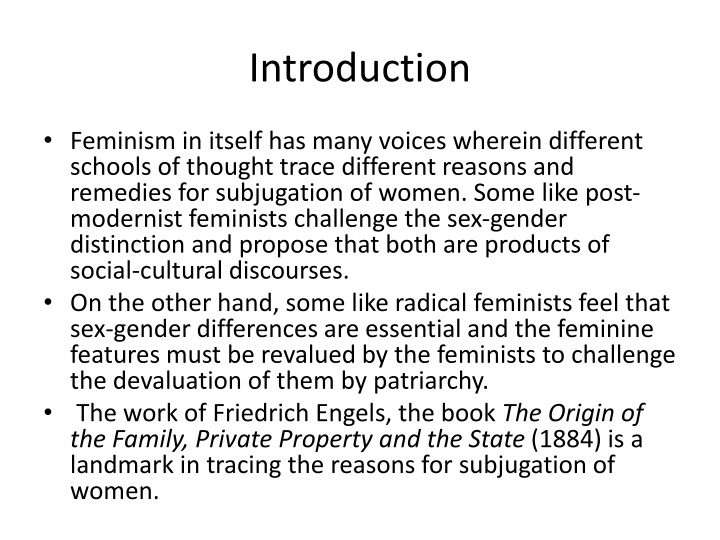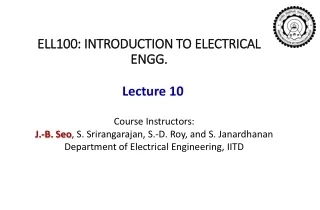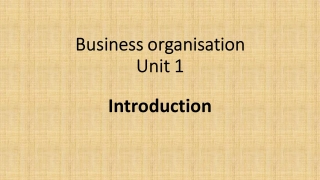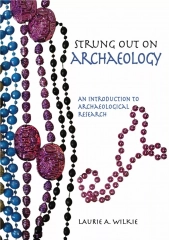Introduction
Feminism embodies diverse voices with different views on women's subjugation. Engels' analysis, contrast with later Marxists, Kollontai's challenge, and focus on personal transformation elucidate key aspects of feminist discourse. The evolution of ideas spanning from the origins of patriarchy to the role of class in gender inequality is examined with a critical lens, shedding light on the complexity of feminist thought.
Download Presentation

Please find below an Image/Link to download the presentation.
The content on the website is provided AS IS for your information and personal use only. It may not be sold, licensed, or shared on other websites without obtaining consent from the author.If you encounter any issues during the download, it is possible that the publisher has removed the file from their server.
You are allowed to download the files provided on this website for personal or commercial use, subject to the condition that they are used lawfully. All files are the property of their respective owners.
The content on the website is provided AS IS for your information and personal use only. It may not be sold, licensed, or shared on other websites without obtaining consent from the author.
E N D
Presentation Transcript
Introduction Feminism in itself has many voices wherein different schools of thought trace different reasons and remedies for subjugation of women. Some like post- modernist feminists challenge the sex-gender distinction and propose that both are products of social-cultural discourses. On the other hand, some like radical feminists feel that sex-gender differences are essential and the feminine features must be revalued by the feminists to challenge the devaluation of them by patriarchy. The work of Friedrich Engels, the book The Origin of the Family, Private Property and the State (1884) is a landmark in tracing the reasons for subjugation of women.
Reasons for Subjugation of Women: Engels According to Engels primitive society exhibited egalitarian social and sexual relations based on collective production and community ownership of property. With division of social classes, private property and the monogamous heterosexual marriage headed by a male became the norm. Increase in wealth gave more status to the man in the family and provided the stimulus to overthrow the traditional order of matrilineal inheritance to establish the institution of patriliny.
Engels Vs the Later Marxists But how did it come about? The later Marxists answered this question by arguing that the child rearing process acted as an impediment for women to adjust to the changing mode of production. Owing to this women restricted themselves to the private sphere of home, staying away from activities like hunting and labour in factories. Consequently, they lost sexual, social and economic freedom. The uniqueness of Engels lay in the fact that he put forth the significant aspect that family based on sexual difference and hierarchy is not natural but a product of changes in the mode of production and thus can be changed. But the later day Marxists rarely engaged with issues of sex and gender as they gave primacy to class issues.
Challenge from Kollontai They felt that the sex and gender discrimination will automatically dissolve once the class question is resolved. So no emphasis was given on this, rather, primacy was given to class issues. Alexandra Kollontai challenges this and argues that the women s question must be addressed with urgency. Thus, it can also be argued here that this was a vacuum in Marxist philosophy which was challenged by Marxist feminist Alexandra Kollontai who felt the need for transformation in personal and family relationships. Alexandra Kollontai was the only woman in Lenin s government. Not satisfied with the results of the Bolshevik Revolution of 1917, she passionately fought for establishing the true ideals of communism throughout her life.
Transformation in Personal and Family Relationship Kollontai firmly believed that real social, economic and political change can come only with a transformation in personal and family relationships. Kollntai s contribution on this important issue can be understood by analyzing her views on two main spheres- a) economic independence of women and b) marriage and problem of the family.
Economic Independence of Women The pertinent question that emerges here is whether a single united women s movement is possible in a society based on class contradictions. Both groups of Bourgeois and Proletariat women speak about liberation of women but their aims and interests are different. Each group unconsciously takes its starting point from the interests of its own class. Bourgeois women want liberation within the class structure of capitalism. They consider men as their enemy and the cause for their subjugation is the power structure of patriarchy.
Liberation of Proletariat Women Bourgeois women are not prepared to share and extend benefits, privileges and rights enjoyed by them in social, political and economic spheres with their proletariat counterparts. Kollontai is very emphatic on this point that the liberation of proletariat women cannot be addressed by the status quo of capitalism. Kollontai was convinced that proletariat women can be liberated only when they fight the twin evils of capitalism and patriarchy. In the fight against capitalism proletariat women need an alliance with proletariat men.
Strategy in Fight with Capitalism and Patriarchy Therefore their strategy has to be that of finding a fine balance of intermingling and isolation from proletariat men in their dual fight with capitalism and patriarchy. Kollontai also believed that economic independence of proletariat women is a first step towards their equality in private and public spheres. For Kollontai mere political rights will not guarantee them liberation. According to Kollontai Bourgeois women s claim that they are the vanguards of the women s movement is a false claim. As per Kollontai s argument bourgeois women entered the labour market after many years of proletariat women flooding factories.
Wider Vision of Proletariat Women She also insisted that it was proletariat women who challenged both capitalism and patriarchy first. The primary identity of proletariat feminists is their working class identity. By demanding better production structure, proletariat women are visualizing a better personhood based on independence and dignity for themselves, their proletariat brothers and bourgeois sisters in both economic and political spheres. That is why the proletariat women s vision is wider than that of bourgeois women who are just concentrating on political rights.
Intersectionality of Class and Gender In the theory of class and gender as propounded by Kollontai, she was much ahead of her times to see the intersections of class and gender. There is a vital lesson for India here as India has failed to witness any unified feminist movement for interests of women are divided on the basis of caste, class, region, religion and ethnicity.
Marriage and Problem of the Family Family, According to Kollontai, is the basic foundation for liberation of women. Kollontai highlighted the fact that outmoded and oppressive chains of family structure will make political and economic freedoms/rights meaningless. So the real change has to begin at the family level. Women are oppressed in the family at three levels- as a person, as a wife and as a mother. The husband exploits the wife economically, morally and physically. It is a reality for bourgeois and proletariat women. Legal (civil, criminal and personal laws) or societal (customs, traditions and public opinion) tools or both may be used for the purpose.
Concept of Free Love Alexandra Kollontai propagated free love in a non- patriarchal communist society. Kollontai argued that in a patriarchal bourgeois society a woman is measured in binaries of wife and whore. If she is economically and emotionally dependent on one man and delivers sexual and otherwise services without pay to one man, then she is called a dedicated wife. If she challenges these exploitations and dares to love without orders and chains, then it leads to the burden on that woman to take care of children alone and unaided.
Proletariat Woman Vs Bourgeois Woman On the other hand, another option to women is to be economically independent by charging for one s sexual and otherwise services to, not one man, but to many men. Then she will be called and seen derogatively as a whore. In this respect also a proletariat woman s experiment with free love will prove to be more costly for her than that for her bourgeois counterpart. She will be seen as morally corrupt and an easily available product for bourgeois men without any bargaining power. On the contrary it is more acceptable to a bourgeois woman.
Communism of Family and Property Kollontai demanded that women should be relieved of dependence on husband and capital. Like Plato she is also proposing communism of family and property. Like Plato Kollontai also visualized a society where the existence of individual family units based on paternity will end. Sexual union has to be free for both sexes. Such unions can be multiple with multiple partners in the lifetime of a person. Both partners are economically independent and they must equally contribute to productive and reproductive roles in the society.
Role of the State The responsibility to provide food, clothing and education (basically child-rearing and care) of children born out of such sexual union should be that of the state. Kollontai perceived the state cr che as a tool to ensure this task. Kollontai also spoke about maternity protection and insurance. She emphasized that a woman must get sixteen weeks of break, eight before and eight after the birth of the child. Kollontai was very critical of the fundamental principles of Soviet morality which was the marginality of the sexual question. Kollontai challenged the hostility of orthodox Marxism to psychological and sexual issues and its emphasis on the need for disciplined and responsible family sex.
Special Legislations by Kollontai Kollontai as part of the new revolutionary government drafted several decrees to help women overcome domestic slavery and expand their horizons. She drafted decrees which nationalized pre-natal care of mothers, provided for well-appointed communal kitchens and childcare centres. She also drafted egalitarian marriage laws and announced that the state would invest in the equal education of women. Kollontai firmly believed that after the Bolshevik Revolution of 1917 women subjugation would not be automatically solved. Therefore, special legislations in this direction were required.
Special Legislations(contd.) She wanted to write off rules of economic dependence , domestic slavery and culture of love and sexuality propagated by patriarchy. Women today are fighting for expression of sexual desire as a fundamental right and they are seeking accountability from their employers, both private and public, to provide maternity and child-care benefits. This is happening all over the world. In India the Maternity Benefit Act 2017 also highlighted and extended maternity leave benefits from 12 weeks to 26 weeks is a case in point.
Maternity Benefit Act 2017 (India) But the implementation part of these provisions is a major challenge in India notwithstanding the fact that at least enactment of a law is a stepping stone towards greater gender equality in future.
Kollontai and Contemporary Society The relevance of Alexandra Kollontai and her ideas has increased over the years as strengthening of capitalist and patriarchal forces in most parts of the world is a reality of our times. Kollontai s insight of interconnections between political rights, sexual rights and economic rights in ensuring true equality is invaluable. In our times the practice of having a women s wing in every political party or organization can be traced to the ideas of Alexandra Kollontai.
Kollontai and(contd.) Her contribution to feminism to perceive personal as political cannot be ignored either. However, sexual/gender equality at the personal level is the toughest and a long-drawn struggle for feminists across the world. The contribution of Alexandra Kollontai in the contemporary world could be measured through two main areas: i) Production and ii) Reproduction.
Production Most Marxist scholars equated production with public . It was ignored that women played crucial and caring roles in households to produce the necessities of life. Today, there is an increasing awareness and realization on the part of women that they are equal to their husbands and have every right to live a dignified life. The state has passed legislations to establish equal worth of women at home which was never the case earlier. The state legislated only on public matters earlier.
Production (contd.) In India the passing of the Protection of Women from Domestic Violence Act in 2005 symbolizes the state s intervention to end sexual, emotional, psychological and economic exploitation of women at home. But the exploitation still persists in patriarchal societies as the work done by women at home is invisible and unpaid. The increasing number of women working outside home could be another change in the understanding of production. It must be noted here that the number of working women are more in unorganized and unskilled work and therefore official data fail to capture the true contribution of women in production.
Production (contd.) A positive trend can also be seen in recent times in women claiming their rights as workers. The case of the formation of the National Domestic Workers Federation to vocalize demands of women workers is significant. There are also associations like Durbar Mahila Samanwaya Committee which have been formed recently to demand a dignified livelihood for women engaging in sex work. Such workers as engaged in domestic work or sex work were traditionally neglected as they were not seen as contributors/producers.
Production (contd.) Even in the visible workers category women workers have expressed their unhappiness with patriarchal trade unions in representing their issues. For example, the women workers in tea plantations of Munnar, Kerala, have expressed such unhappiness. The European understanding of production being an exclusive public terrain task cannot be applicable to non- European societies. For example, in India, especially in agrarian production centres, the household is a focal point of production. From sowing of seeds to harvesting, at every step all members of family participate. Thus participation in production cannot be confined to only when one steps outside the household.
Women and Post-liberalization Even today the public domain is seen as the men s domain. According to the World Bank Report of April 2017 only 27 per cent of Indian women are in the labour force. The trend of women quitting jobs in the post- liberalisation of economy era is increasing. The fact of more girls/women being educated now is not checking this trend and this is very note-worthy. Alexandra Kollontai is very relevant here to know the reason of this happening. The reason is the same that Kollontai identified years ago, that is, lack of women s agency in deciding her life.
Womens Agency in Decision Making Girls and women, unlike their counterparts, must have permission of their fathers, brothers, husbands and in some cases even village panchayats in order to work or even learn skills that will make them employable. Family and responsibility for household work keep women away from joining the labour force. Thus Kollontai s vision of women s worth as equal producers in society is still a far cry.
Reproduction Alexandra Kollontai had strong reservations about reducing women to solely reproductive roles. She wanted women to move beyond being womb bearers and care-givers. Kollontai argued in favour of the state to take over these responsibilities. In India, certain corporate houses have taken the initiative to reduce or lessen the burden of working women from their nurturing roles. But it has a long way to go. Even today, husbands/partners at home expect and impose nurturing roles to women only. Women workers are seen as a liability for their double burden of domesticity and professionalism in most corporate houses even in contemporary times.
Reproduction (contd.) This could be evident from the fact that the appointment of women and especially to top ranks is discouraged in an unsaid manner. Cultural or mindset issues are also there as women who opt for a career over marriage and motherhood are ridiculed in society. The growth of Artificial Reproductive Technologies (ARTs) and the hormonal and psychological experiments done on women s bodies to just produce babies is also a case in point. Thus, it can be seen that the market is also reinforcing reproductive roles of women to their favour and thus strengthening patriarchal prejudices and privileges.
Concluding Observations Alexandra Kollontai s unique contribution, as has also been noted earlier, lies in the fact that she insisted on changes in the personal domain i.e. in the structures of the family along with economic restructuring. This is clearly evident today since in socialist societies mere reforms in the economic sphere refuse to bring reforms in the patriarchal family structure. Patriarchal structure is seen to be intact in socialist societies as well. In addition to women s helping reproduction of labour on a daily basis by their nurturing roles, the fact that they are also helping reproduction of labour by generational worth by giving birth to young ones is completely ignored in a patriarchal society.
Concluding(contd.) The call for sexual democracy wherein everyone can raise their voice for free love given by Kollontai remains an unrealized dream. A society where equality is experienced in the true sense in all spheres of life (sexual, social, economic and political) irrespective of caste, class, gender, race, region, religion and ethnicity is a vision given to us by Alexandra Kollontai.













